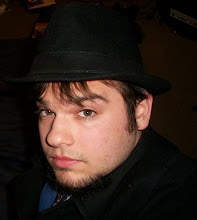"Mr. Johnson's curriculum included only minimal attention to any systematic analysis of the ills his students were helping to alleviate. Instead, his class focused on inculcating a sense of civic duty. His high school seniors were not asked to articulate an understanding of the conditions and contexts that might have contributed to the loss of a family's home or to a pregnant mother's decision to turn to crack cocaine."
While Mr. Johnson's effort is certainly admirable, it does leave out some key issues. While it may be beneficial to provide services to those less fortunate than yourself, this only placates the problem temporarily. The problem will briefly alleviate itself...but then return full force given time. It's like the needle situation described in one of our earlier readings. Sure, clean needles will cut down on HIV, but the underlying problem is still the rampant drug use. Now I'm pretty libertarian when it comes to drug use, but I would never encourage it and would rather have a world where far fewer people turn to powerful drugs. Anyways, this charitable action of the distribution of clean needles only solves one problem but does not tackle the main problem. Johnson's class should have focus on the WHY and not the WHAT. That way, they could take the WHY into consideration when designing programs to solve the WHAT.
"Ms. Adams' students, by contrast, began their work with a systematic and critical analysis of the causes of homelessness and of the strategies employed to prevent it. The class discussed the growing economic disparity between rich and poor, the impact of homeless ness on children, and the difficult balance between individual rights and collective responsibility. Students read stories by homeless children and wrote essays assessing the impact of homelessness on people like themselves."
This approach is far better. Only when you gain the most information possible can you successfully analyze a situation. Only when you have successfully analyzed a problem can you make a sound attempt at rectifying it. This is what Ms. Adams students. They looked at the WHY. Why are people homeless? Not just "what can we do to help them out". When you look at the why, you can make an attack on the root of the problem and not just on the problem itself.
As I have said in class, I find myself to be between the two models of of service learning. I am charitable, because I am only there because it is my responsibility to do so in class to get a good grade. On the other hand, I really do want to make some sort of impact in these kids lives. That is why I got into education in the first place...because I really do hope to make some sort of difference. I don't want education to be something foreign. I want it to be embraced.
Saturday, March 27, 2010
Subscribe to:
Post Comments (Atom)


No comments:
Post a Comment